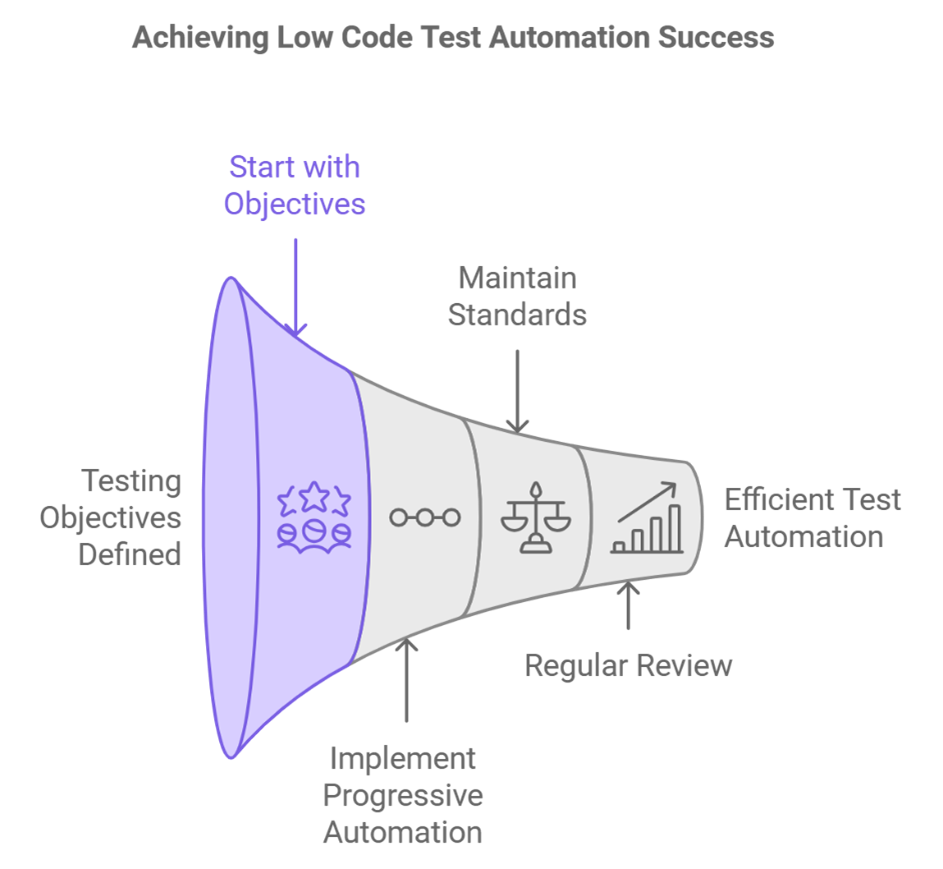What is Low Code Test Automation?
Low code test automation represents a revolutionary approach to software testing that minimizes the need for extensive coding while maximizing testing efficiency. At ideyaLabs, we’ve witnessed how this innovative testing methodology is transforming the QA landscape by enabling both technical and non-technical team members to contribute to the testing process.
Why Low Code Test Automation Matters in 2024

The software development landscape is evolving rapidly, and traditional testing approaches often can’t keep pace with modern delivery demands. Low code test automation addresses these challenges by:
- Reducing the technical barrier to entry
- Accelerating test creation and execution
- Minimizing maintenance overhead
- Enabling broader team participation in testing
- Supporting faster time-to-market
Key Benefits of Low Code Test Automation

1. Increased Testing Efficiency
Low code platforms streamline the testing process through intuitive interfaces and visual workflows, allowing testers to create robust test cases without writing complex code. This efficiency boost enables teams to achieve higher test coverage in less time.
2. Reduced Learning Curve
Unlike traditional automation frameworks that require extensive programming knowledge, low code solutions empower team members with varying technical backgrounds to contribute effectively to the testing process.
3. Cost-Effective Solution
By reducing the dependency on specialized automation engineers, organizations can optimize their testing resources while maintaining high-quality standards. At ideyaLabs, we’ve helped clients achieve up to 60% cost savings through low code test automation implementation.
Essential Features of Modern Low Code Test Automation

Visual Test Creation
Modern low code platforms offer intuitive drag-and-drop interfaces and record-and-playback capabilities, making test creation accessible to all team members.
AI-Powered Elements
Advanced AI capabilities enable:
- Self-healing test scripts
- Intelligent test maintenance
- Automated test data generation
- Smart element recognition
Seamless Integration
Quality low code automation tools integrate easily with:
- CI/CD pipelines
- Popular testing frameworks
- Project management tools
- Version control systems
Best Practices for Low Code Test Automation Success

- Start with Clear Testing Objectives
Define clear goals and success metrics before implementing low code automation. - Implement Progressive Automation
Begin with simple test cases and gradually progress to more complex scenarios as team expertise grows. - Maintain Testing Standards
Even with low code solutions, maintain consistent testing practices and documentation standards. - Regular Review and Optimization
Continuously evaluate and optimize your test suite to ensure maximum efficiency and coverage.
How ideyaLabs Transforms Testing with Low Code Automation

The Future of Low Code Test Automation

As we look ahead, low code test automation will continue to evolve with:
- Enhanced AI capabilities
- Broader integration options
- Improved visual testing features
- Advanced analytics and reporting
Conclusion
Low code test automation is revolutionizing software testing by making it more accessible, efficient, and cost-effective. As organizations continue to embrace digital transformation, the adoption of low code testing solutions becomes increasingly crucial for maintaining competitive advantage.
Ready to transform your testing process with low code automation? Contact ideyaLabs today to learn how our expertise can help you achieve your testing goals.